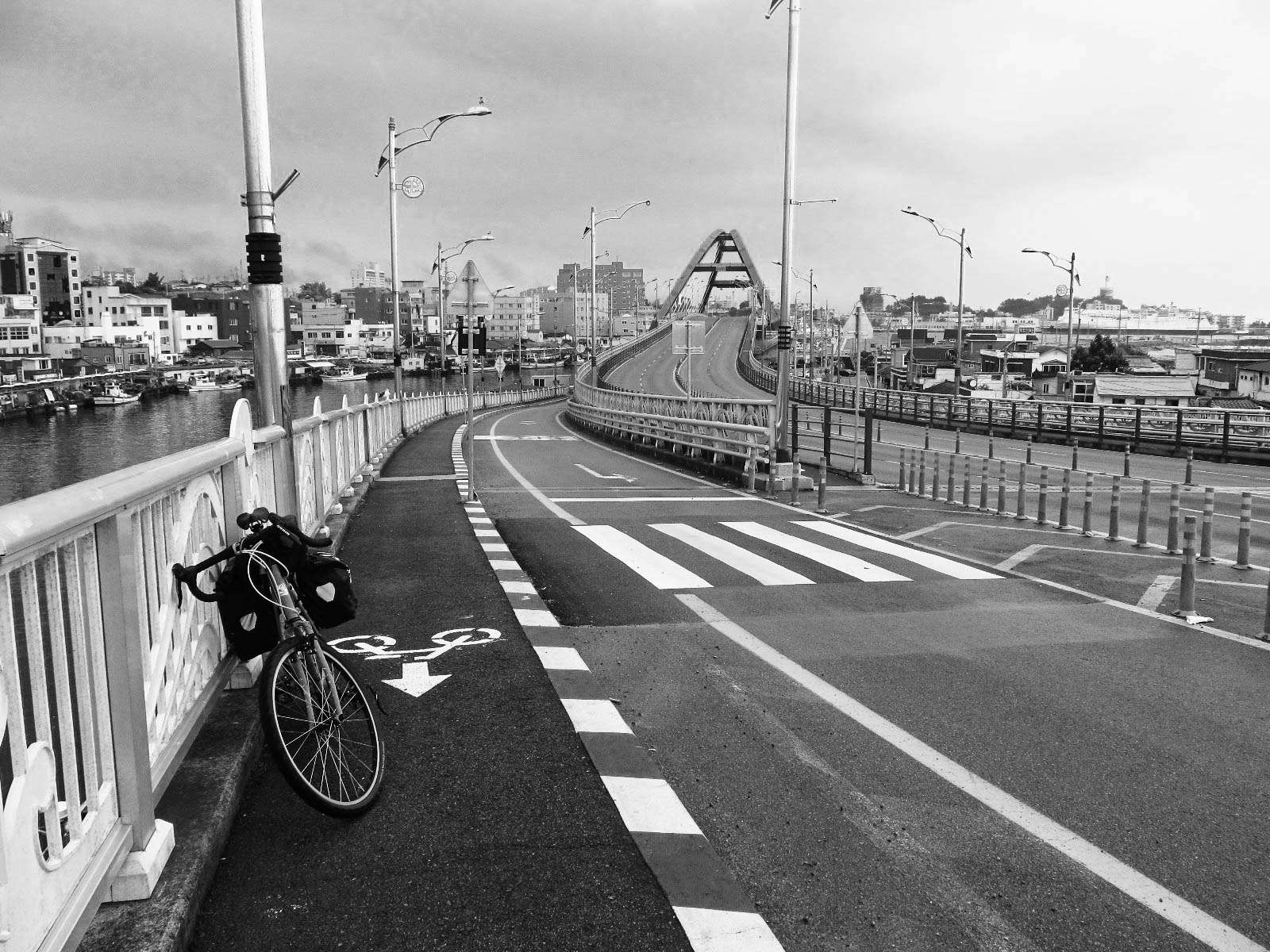There’s a phrase South Korea has long claimed for itself: “The Land of the Morning Calm.” It conjures mist over tiled rooftops, temple bells ringing across pine ridges, and a certain serenity felt at dawn as the day begins. But calm is only part of the truth. For the touring cyclist, South Korea is more aptly described as a land of quiet tensions and unexpected freedoms — where ultra-modern cities hum with futuristic efficiency and yet, just a few turns of the pedals away, ancient Hanok villages seem frozen in a slower, simpler time.
It’s a country where contrasts don’t clash, they coexist, often side by side — inviting discovery, challenging assumptions, and rewarding the curious.
From Seoul: Into the Arteries of a Nation
Seoul is not the chaos of other Asian megacities. It’s clean, organized, and startlingly bike-friendly. From its core, the Hangang River cycling path unspools like a ribbon, leading you out of the city on a protected green corridor, away from traffic and into the rhythms of the land. It’s here that the journey truly begins — not with a sprint, but with a gentle, almost meditative pace.
The river path is more than a convenience; it’s a metaphor for South Korea’s infrastructure-first ethos. This is a country that has invested in its cycling routes with the same care it’s given to its bullet trains and subway systems. Here, you don’t fight for space — you’re given it.
And yet, as you follow the Han River upstream toward the borderlands, that tranquility is pierced by history. The DMZ looms not with danger but with significance — a surreal reminder that beneath this country’s orderliness lies an unresolved tension. To stand at the edge of the divide, looking north into the unknowable, is to feel the strange gravity of a nation that has lived divided for generations. The ride to the DMZ is as much about perspective as it is about mileage.
Down the East Sea: Riding the Quiet Coast
From the north, the route swings south, hugging the East Sea — or Donghae, as it’s locally known — toward the port city of Busan. This stretch is a cyclist’s dream: long, undulating coastal roads, fishing villages that smell of seaweed and salt, and the occasional roadside seafood shack where the octopus is still moving.
It’s also where the contrast sharpens. At one moment, you’re navigating tunnels cut into coastal cliffs, the sea glittering beside you. The next, you’re rolling past industrial towns that seem caught between booms. This is the real Korea — not curated for tourists, but pulsing with everyday life. Each rest stop, each 7-Eleven (a cyclist’s oasis here), becomes part of the rhythm: ride, pause, reflect, continue.
Busan: The Pulse of the South
Busan is not Seoul. It’s edgier, grittier, more kinetic. Korea’s second city is where mountains crash into sea, where neon signs spill over fish markets and students pour out of karaoke bars at midnight. For a cyclist, it’s both a challenge and a reward — chaotic to enter, but full of unexpected charm.
Here, the journey bends again — this time inland, into the mountainous core of the peninsula, where the roads become steep and the discoveries more subtle.
Into the Mountains: Hanok Villages and Healing Waters
Leaving Busan behind, you climb toward Andong, a city famed for its preservation of traditional culture. The Hahoe Folk Village, a UNESCO site, offers more than just photo ops — it offers a glimpse into the spiritual and architectural DNA of Korea. Cycling here, through narrow lanes lined with Hanok homes, you feel time slacken. It’s not curated nostalgia — it’s lived history.
The road continues into the serene countryside around Suanbo, known for its hot springs and quiet valleys. The climbs are real here — gradients that test your resolve — but the reward is solitude. You pass rice paddies, forest shrines, and the occasional ajumma cheering you on from beneath a wide-brimmed sun hat. This is the Korea you don’t see in brochures — generous, grounded, full of grace.
The Baekdu Daegan: Spine of a Nation
Then come the Baekdu Daegan Mountains — Korea’s sacred spine. The ridge trail itself is a hiker’s domain, but cyclists feel its presence constantly. The roads trace its contours, climbing into high passes, revealing misted peaks and pine-cloaked ridges. Riding through this region is to confront both challenge and transcendence. The gradients are punishing. The rewards? Perspective. Solitude. The kind of landscape that invites both effort and awe.
It is here that Korea feels most ancient, most elemental — a place where the bicycle is not just a machine but a means of communion.
A Journey of Layers
Cycling South Korea is not epic in the usual sense. It’s not about colossal wilderness or dramatic altitude. It’s about layers — cultural, historical, spiritual — unfolding one by one as you move. It’s about a society built for the future but rooted in a deep past. And for the touring cyclist, it’s an opportunity to engage with both.
It’s the balance between quiet paths and high-speed trains, between bibimbap in a rural guesthouse and soy lattes in a Seoul café. Between stillness and surge.
Why Ride South Korea?
For the cyclist seeking a new kind of adventure — safe, supported, culturally rich, and physically varied — South Korea offers a unique promise. It’s not the loudest voice in the cycling world, but it’s one of the most resonant.
This is a land of wonders — not the explosive kind, but the slow-burning kind. The ones that linger in your memory long after the ride is done.
So ride it. Ride it all — from the Hangang to the Donghae, from Busan’s chaos to Andong’s grace, over the ridges of Baekdu Daegan and back to the streets of Seoul.
Because South Korea doesn’t shout to be seen.
It waits to be ridden into understanding.
